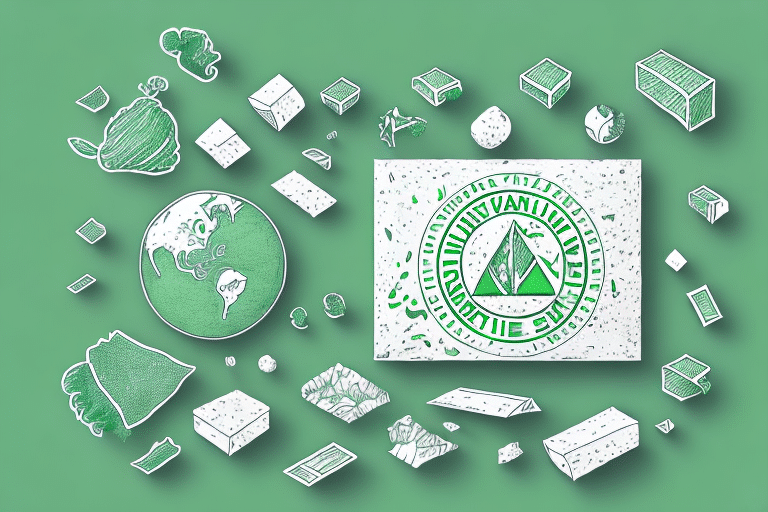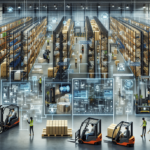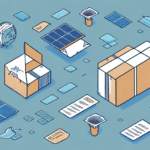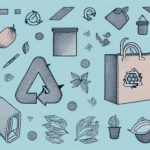Eco-Friendly Packaging: Understanding the Environmental Impact and Solutions
In recent years, there has been a growing awareness about the impact of packaging on the environment. Packaging, while necessary for protecting products during transportation and storage, often results in significant environmental damage due to its non-biodegradable nature. This article delves into the environmental impact of packaging and explores the rise of eco-friendly packaging solutions, including innovative materials and practices being implemented by companies to reduce their carbon footprint.
The Environmental Impact of Packaging
Traditional packaging is predominantly made from non-biodegradable materials, such as plastic, which can take hundreds of years to decompose in landfills. Consequently, packaging waste frequently ends up in rivers and oceans, harming marine life and disrupting delicate ecosystems. Moreover, the production of packaging materials consumes vast amounts of resources and energy, contributing significantly to greenhouse gas emissions and climate change.
The Dark Side of Packaging: The Making of a Hellhole
The production of single-use plastics has become a leading source of environmental pollution in recent years. According to the National Geographic, millions of tons of plastic packaging waste enter our oceans annually, causing grave harm to marine life and ecosystems. Furthermore, plastic waste contributes to the formation of "garbage patches" in the oceans, which have been described as "floating hellholes."
However, there are alternatives to traditional packaging that are more environmentally friendly. Biodegradable packaging, made from materials such as cornstarch or paper, can decompose naturally and reduce the amount of waste in landfills. Additionally, reusable packaging, such as glass jars or cloth bags, can significantly decrease the volume of packaging waste produced. By choosing sustainable packaging options, we can lessen our environmental impact and protect our planet for future generations.
The Rise of Green Packaging
Amidst growing concern about the harmful effects of packaging waste, there has been a notable increase in the use of eco-friendly, sustainable packaging materials in recent years. Green packaging is characterized by the use of materials that are renewable, recyclable, biodegradable, and compostable—materials that do not harm the environment or contribute to pollution. This shift towards eco-friendly packaging solutions is driven by a desire to reduce waste and mitigate the negative impact of traditional packaging materials on the environment.
Enter Green Packaging: A Sustainable Solution
Green packaging is a sustainable solution that seeks to balance the need for packaging with environmental preservation. It involves selecting sustainable materials and implementing eco-friendly packaging practices such as reducing the amount of packaging used, optimizing packaging design, and ensuring supply chain transparency. By adopting green packaging practices, businesses can reduce their carbon footprint and ensure a more sustainable future for our planet.
The Benefits of Green Packaging: Why It Matters
Green packaging offers a range of benefits. Firstly, it reduces the amount of waste generated by businesses, thereby minimizing their environmental impact. Secondly, using sustainable materials in packaging can lead to improved and more efficient manufacturing processes. Finally, adopting sustainable packaging practices can help businesses build their reputation as environmentally responsible and socially conscious entities.
The Future of Green Packaging
The future of green packaging looks promising, as more businesses recognize the importance of sustainability and take steps to reduce their environmental impact. In addition to using sustainable materials and eco-friendly practices, emerging technologies are being developed to further enhance the sustainability of packaging. For example, bioplastics made from renewable resources such as corn starch and sugarcane are becoming more widely available, and innovations in packaging design aim to reduce waste and improve recyclability. As consumers become more environmentally conscious, the demand for green packaging is likely to continue growing, making it an essential consideration for businesses aiming to stay competitive in the marketplace.
Exploring Alternative Packaging Materials
Green packaging involves the use of alternative materials that are sustainable, recyclable, or biodegradable. Here are some materials being utilized to create sustainable packaging:
Innovative Materials Changing the Packaging Game
Biodegradable plastics made from corn or potato starch are becoming more common in packaging products. These plastics decompose naturally and do not contribute to pollution. Other materials, such as bamboo, paper, and bagasse—the fibrous residue left after juice extraction from sugarcane—are also being used in green packaging solutions to create new sustainable and biodegradable products.
The Pros and Cons of Different Packaging Materials
When exploring alternative packaging materials, it is essential to consider the pros and cons of each option. Biodegradable plastics may be more sustainable than traditional plastics, but they still require significant resources to produce and may begin to decompose prematurely, complicating the storage and transportation of products. Similarly, while paper and cardboard are biodegradable and recyclable, their production can contribute to deforestation and the loss of important ecosystems if not sourced responsibly.
The Importance of Sustainable Packaging
The use of sustainable packaging is increasingly important as consumers become more environmentally conscious. Sustainable packaging not only reduces waste and pollution but also helps preserve natural resources and protect the planet for future generations. Companies that prioritize sustainable packaging are more likely to attract and retain customers who value eco-friendly products and practices.
Emerging Trends in Green Packaging
The development of new and innovative materials for green packaging is an ongoing process. Researchers are exploring materials such as mushroom-based packaging and seaweed-based packaging, which have the potential to be even more sustainable and biodegradable than current options. As technology advances and consumer demand for eco-friendly products grows, the future of green packaging looks increasingly promising.
Companies Leading the Way in Sustainable Packaging
Many businesses recognize the importance of adopting more sustainable packaging practices and are leading the charge for eco-friendly packaging solutions. Here are some companies making significant strides in sustainable packaging:
Organizations Making a Positive Environmental Impact
Companies such as Nike, Dell, and Procter & Gamble have implemented sustainable packaging practices in their supply chains. They are using more eco-friendly and sustainable packaging materials, reducing the amount of packaging used, and introducing initiatives to collect and recycle packaging waste. These efforts ensure that the products they sell contribute to an environmentally friendly future.
Implementation of Sustainable Packaging Practices
Companies are implementing eco-friendly packaging practices in various ways. Some are using biodegradable packaging materials, such as mushroom-based packaging. Others are redesigning their packaging to be more efficient, reducing the amount of packaging material used. Additionally, companies are introducing recycling initiatives that allow customers to recycle used packaging and transform it into new, useful products.
The Economic Benefits of Sustainable Packaging
Adopting sustainable packaging practices offers not only environmental benefits but also economic advantages for businesses. By reducing the amount of packaging used, companies can save on material costs and transportation expenses. Furthermore, sustainable packaging can enhance a company's brand image and reputation, as consumers increasingly recognize the impact of packaging waste on the environment. Implementing sustainable packaging practices helps businesses attract environmentally conscious consumers and gain a competitive edge in the market.
What Your Business Can Do to Reduce Packaging Waste
Businesses of any size can play a role in reducing packaging waste and contributing to a more sustainable future. Here are some simple steps your business can take to reduce packaging waste:
Simple Steps to Implement Sustainable Packaging
- Choose eco-friendly packaging materials that are biodegradable, compostable, or recyclable.
- Reduce the amount of packaging used and optimize packaging design to minimize waste.
- Encourage customers to recycle by creating recycling initiatives in partnership with local recycling facilities.
- Enhance supply chain transparency to ensure the use of eco-friendly packaging materials and identify opportunities for packaging optimization.
The Economic Benefits of Sustainable Packaging Practices
Adopting sustainable packaging practices can also yield economic benefits for your business. By reducing packaging waste and the unnecessary use of packaging materials, businesses can save on packaging costs and improve their bottom line. Additionally, sustainable packaging can help businesses attract socially conscious consumers who prioritize environmentally responsible companies, thereby expanding the customer base and increasing sales.
Additional Strategies for Reducing Packaging Waste
In addition to the steps mentioned above, businesses can implement a closed-loop system, which involves collecting used packaging materials from customers and reusing them in the production process. This approach not only reduces waste but also saves on the cost of purchasing new packaging materials.
Furthermore, businesses can adopt a "bring your own container" policy, encouraging customers to bring their own reusable containers for products such as food and beverages. This strategy not only reduces packaging waste but also promotes a culture of sustainability among customers.
Conclusion
Packaging is an essential component of the supply chain process, but it should not come at the expense of our environment. The adoption of sustainable packaging practices is crucial to ensuring the longevity of our planet. By exploring alternative packaging materials and embracing eco-friendly packaging practices, businesses can mitigate their environmental impact and contribute to a greener future for all.






















